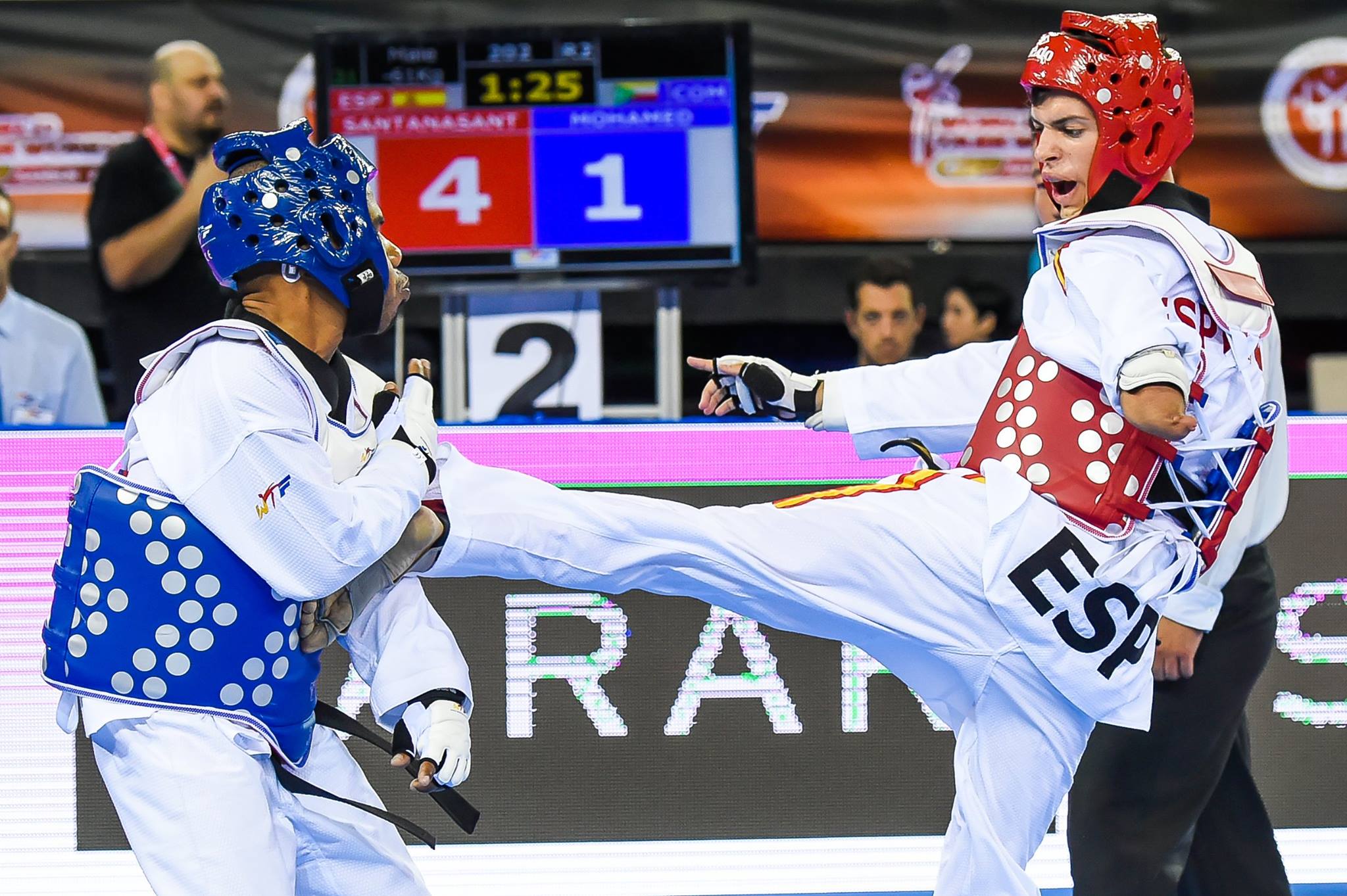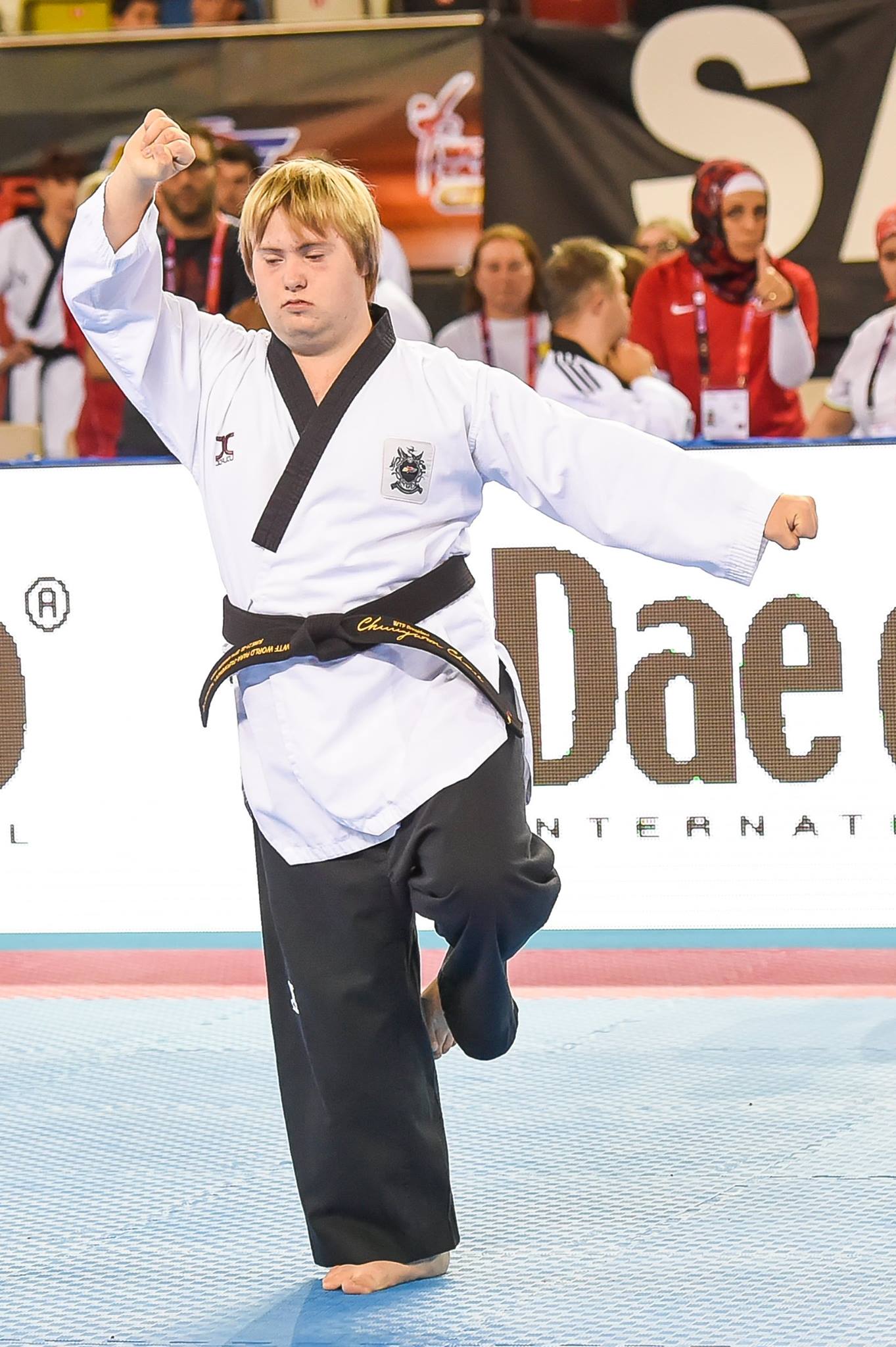Para Taekwondo on:
[Wikipedia]
[Google]
[Amazon]
Para Taekwondo is an adaptation of ''


Taekwondo
''Taekwondo'', ''Tae Kwon Do'' or ''Taekwon-Do'' (; ko, 태권도/跆拳道 ) is a Korean martial arts, Korean form of martial arts involving punching and kicking techniques, with emphasis on head-height kicks, spinning jump kicks, and fast k ...
'' for disabled athletes. The sport's main governing body is World Taekwondo (WT). New disciplines such as ''kyorugi'' and ''poomsae'', both martial arts forms, have been developed for para-athletes. On January 31, 2017, Para Taekwondo was confirmed as a sport for the 2020 Tokyo Paralympic Games at the International Paralympic Committee (IPC) General Assembly the same year the WT became a full member of the IPC.
History
Origins
The WT founded the Para Taekwondo Committee in 2006 to help promote and develop ''Taekwondo'' for athletes with an impairment. At first, Para Taekwondo concentrated on developing ''kyorugi'' (sparring) for arm amputees and limb-deficient athletes. The first Para Taekwondo Championships were held inBaku, Azerbaijan
Baku (, ; az, Bakı ) is the capital and largest city of Azerbaijan, as well as the largest city on the Caspian Sea and of the Caucasus region. Baku is located below sea level, which makes it the lowest lying national capital in the world an ...
, in 2009. Following the unsuccessful inclusion on the Rio 2016 Paralympic Games program, a working group was put together to discuss Para Taekwondo in 2013 during the WT World Para Taekwondo Championship. the Para Taekwondo Committee invited guests from Cerebral Palsy International Sports and Recreation Association
The Cerebral Palsy International Sports and Recreation Association ( CPISRA) is an international sports and recreation association for cerebral palsy and related neurological conditions. CPISRA organise recreational opportunities, develop adaptiv ...
(CPISRA) and International Sports Federation for Persons with an Intellectual Disability (INAS). Following the work group’s recommendations, Para Taekwondo was expanded, and worldwide competitions were made available to athletes of all impairments. ''Poomsae'' was chosen to be included in competitions for athletes with neurological, intellectual, or visual impairments. Para Taekwondo Poomsae competitions were held for the first time for intellectually impaired athletes at the fifth WT World Para Taekwondo Championships in Moscow. Para Taekwondo Poomsae was also added as a demonstration sport during the 2015 INAS Global Games and the 2015 CPISRA World Games.
Application process for the Paralympic Games
The WT became an IPC-recognized international federation in October 2013. To be included in the 2020 Tokyo Paralympics program, the WT submitted a letter of intent to the IPC in January 2014. The second stage of the application process was completed in July 2014. During the IPC Governing Board meeting in Berlin, Germany, in October 2014, the WT presented their bid to have Para Taekwondo in the 2020 Tokyo Paralympic Games. After the meeting, some sports were confirmed for the 2020 Tokyo Paralympic Games program; Para Taekwondo was not one of them. In January 2015, the IPC held a Governing Board meeting in Abu Dhabi, where the final decision on the sport program for the 2020 Tokyo Paralympics was made.Governance
The WT is Para Taekwondo's governing body, and sets the rules and regulations for the sport. In 2013, the WT was formally recognized by IPC and WT became a full member of IPC in 2015.Competition disciplines
''Kyorugi'' and ''poomsae'' are the two disciplines that the WT conducts in competition format to include athletes of all impairments in Para Taekwondo. The rules of Para Kyorugi differ from Olympic Kyorugi, as all techniques to the head are prohibited and punches are not awarded points.Para Taekwondo Kyorugi

Competition system
Para Taekwondo Kyorugi matches are conducted in a single elimination tournament system, a round robin system, or a single elimination tournament system withrepechage
Repechage (; french: repêchage, "fishing out, rescuing") is a practice in series competitions that allows participants who failed to meet qualifying standards by a small margin to continue to the next round. A well known example is the wild car ...
.
Duration
Para Taekwondo Kyorugi competitions consist of for 3 two-minute rounds, with a one-minute rest period between rounds. If there is a tied score after the third round, the Golden Point round (fourth round) is conducted following the third round with a one-minute rest period. The match's duration may be adjusted by the technical delegate. Sport classes are taken into consideration when the technical delegate decides on duration changes.Valid points
Two points are awarded for a valid foot technique to the trunk protector, three points for a valid turning foot technique to the trunk protector, and four points awarded for a valid spinning technique to the trunk protector. One point is awarded for every one ''gam-jeom'' (penalty deduction) given to the opponent.Weight division
Weight divisions in Para Taekwondo Kyorugi are divided by weight and gender as follows:Para Taekwondo Poomsae

Competition system
Para Taekwondo Poomsae matches are conducted in a single-elimination ordouble-elimination
A double-elimination tournament is a type of elimination tournament competition in which a participant ceases to be eligible to win the tournament's championship upon having lost ''two'' games or matches. It stands in contrast to a single-elimin ...
tournament system.
Duration
The duration of a Para Taekwondo Poomsae competition is between 20 and 120 seconds, and the competitor must perform each ''poomsae'' with rhythm and precision during the duration. The contestants alternately perform their ''poomsae'' in a match. If a contestant finishes their ''poomsae'' earlier, their opponent is guaranteed at least a one-minute rest period between each ''poomsae''.Scoring criteria
The total score of Para Taekwondo Poomsae competition is 10.0 points. In the P20 Sport Class additions are made based on the difficulty of the ''poomsae'' being performed. Scoring is divided into two point categories: technical and presentation. The maximum points for each point category is as follows: Technical (4.0); Presentation (6.0).Divisions
The divisions of Para Taekwondo Poomsae competition are divided by age and gender.Para Taekwondo athlete evaluation
Athlete evaluation is the procedure where the classification panel assesses if the athlete meets the Minimum Impairment Criteria (MIC) so that the athlete may be designated a Sport Class. There are three types of assessment: physical assessment, technical assessment, and observation assessment.Sport classes
Sport classes in Para Kyorugi and Para Poomsae have a “K” and “P” prefix, respectively.Major championships or tournaments
Membership
As of August 2017, the WT has 208 member national associations from five continents. There are five continental federations–European Taekwondo Union
The European Taekwondo Union (ETU) or World Taekwondo Europe (WTE) is the official governing body for all Taekwondo matters in Europe as a regional organisation of World Taekwondo. It comprises the National Taekwondo Federations of all the Europe ...
(ETU), African Taekwondo Union
World Taekwondo, called the World Taekwondo Federation until June 2017, is an international federation governing the sport of taekwondo and is a member of the Association of Summer Olympic International Federations (ASOIF).
The ''World Taekwo ...
(AFTU), Asian Taekwondo Union
The Asian Taekwondo Union or WT Asia is the official governing body for Taekwondo in Asia as a regional organisation of World Taekwondo.
References
External links
*
National members of World Taekwondo
Taekwondo
''Taekwondo'', ''Tae ...
(ATU), Oceania Taekwondo Union
World Taekwondo, called the World Taekwondo Federation until June 2017, is an international federation governing the sport of taekwondo and is a member of the Association of Summer Olympic International Federations (ASOIF).
The ''World Taekwo ...
(OTU), and Pan-American Taekwondo Union (PATU). Each continental federation is responsible for the administration, promotion and development of Para Taekwondo within its continent.
World ranking
Para Taekwondo world rankings follow the rules outlined in the WT Ranking Bylaw. They are divided by classification and weight division in Para Kyorugi, and divided by Sport Class and age category in Para Poomsae. Ranking points in both Kyorugi and Poomsae are given to all participants based on G-level of championships or tournaments.See also
* World TaekwondoReferences
{{reflist Taekwondo Paralympic sports